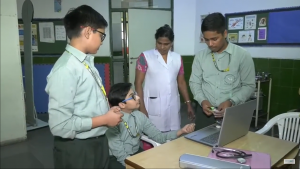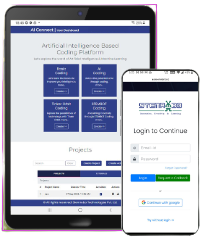Health monitoring using IoT (Internet of Things) technology enables real-time tracking of vital signs and health parameters, providing critical data to healthcare providers and individuals. This innovative approach integrates various sensors and devices, such as pulse rate sensors, blood pressure monitors, and glucose meters, with IoT platforms. These devices collect health data continuously and transmit it via Wi-Fi or cellular networks to cloud-based platforms. Here, data can be analyzed and monitored through dedicated applications or web interfaces. Patients can receive immediate feedback on their health status, and healthcare providers can access detailed records to make informed decisions. The integration of IoT in health monitoring offers several benefits: Real-Time Data: Continuous monitoring provides real-time health data, enabling early detection of potential health issues. Remote Monitoring: Patients can be monitored remotely, reducing the need for frequent hospital visits and allowing for better management of chronic conditions. Data Analysis: Advanced analytics can identify trends and anomalies, facilitating proactive healthcare management. Improved Outcomes: Early intervention based on continuous data can lead to better health outcomes and personalized treatment plans. IoT-based health monitoring systems empower patients with knowledge about their health, enhance the efficiency of healthcare delivery, and promote preventive care.
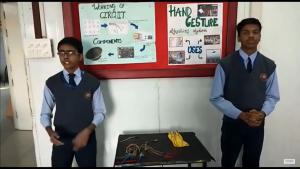
The "Voice of Mute" project aims to bridge communication gaps for individuals with speech impairments by translating sign language into audible speech using an Arduino-based system. This project utilizes flex sensors, an Arduino microcontroller, and a sound playback module. Flex sensors are attached to a glove worn by the user. These sensors detect the bending of fingers corresponding to various sign language gestures. The Arduino reads the resistance changes from the flex sensors and interprets the specific sign being made. Each unique combination of sensor readings correlates to a predefined sign language gesture stored in the Arduino's program. Upon recognizing a gesture, the Arduino triggers the sound playback module, which contains pre-recorded audio files for each gesture. The sound playback module plays the corresponding audio file through a speaker, converting the sign language gesture into spoken words. This real-time translation facilitates communication for individuals who are mute, allowing them to interact more effectively with those who do not understand sign language. The project’s components include: - Arduino microcontroller - Flex sensors - Sound playback module - Speaker - Power supply By leveraging simple electronics and programming, this project provides an innovative, cost-effective solution to enhance communication for the speech-impaired, promoting inclusivity and understanding in diverse settings.
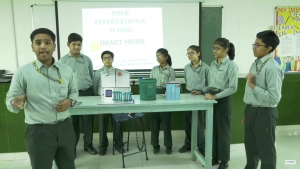
This smart home project uses two Arduinos: one controls home appliances via Bluetooth and relays, while the other manages an automatic door lock with a keypad and servo motor, enabling remote appliance control and secure door access.
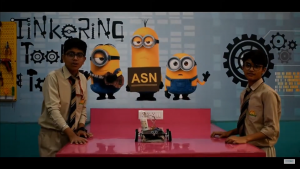
The floor cleaner is an automated robotic device designed to navigate and clean floors autonomously. It utilizes an ultrasonic sensor, a motor driver module (L298N), and a DC motor. The ultrasonic sensor is mounted on the robot to detect obstacles and ensure efficient navigation. The sensor sends out ultrasonic waves and measures the time it takes for the echo to return, calculating the distance to obstacles. The motor driver module controls the DC motor responsible for the movement of the cleaning brushes or wheels. The module receives signals from the Arduino, which processes data from the ultrasonic sensor. When the sensor detects an obstacle within a set distance, the Arduino signals the motor driver to stop or change direction, avoiding collisions. The DC motor powers the cleaner's brushes, effectively sweeping dirt and debris from the floor. Benefits: 1. Automated Cleaning: The robotic cleaner automates the cleaning process, reducing the need for manual labor and allowing users to focus on other tasks. 2. Efficient Navigation: The ultrasonic sensor ensures the cleaner navigates around obstacles efficiently, preventing collisions and ensuring thorough cleaning. 3. Cost-Effective: Utilizing readily available components like the ultrasonic sensor, motor driver, and DC motor makes the cleaner an affordable solution compared to commercial robotic vacuums. 4. Adaptability: The cleaner can be programmed to handle various floor types and cleaning patterns, making it versatile for different environments. 5. Environmental Impact: By maintaining clean floors, the robotic cleaner helps reduce the accumulation of dust and allergens, promoting a healthier living environment. This innovative floor cleaner is a practical, efficient, and cost-effective solution for maintaining clean and tidy floors in homes and offices.

The project aims to protect crops from the detrimental effects of both overwatering and water scarcity, providing a crucial support system for farmers. By integrating advanced irrigation technologies and real-time monitoring systems, the project seeks to optimize water usage, ensuring that crops receive the precise amount of water they need to thrive. Overwatering can lead to root rot, nutrient leaching, and the proliferation of fungal diseases, all of which can severely damage crop yield. Conversely, water scarcity stresses plants, reducing growth and productivity. This project addresses these issues by deploying soil moisture sensors, weather forecasting models, and automated irrigation systems. These technologies work in tandem to monitor soil moisture levels, predict weather conditions, and adjust irrigation schedules accordingly. The implementation of this project not only conserves water resources but also enhances crop resilience, leading to increased agricultural productivity and sustainability. Farmers benefit economically through reduced water usage and improved crop yields, while also contributing to environmental conservation. By adopting this innovative approach, the agricultural sector can ensure food security and sustainable farming practices in the face of changing climate conditions and water availability challenges.

